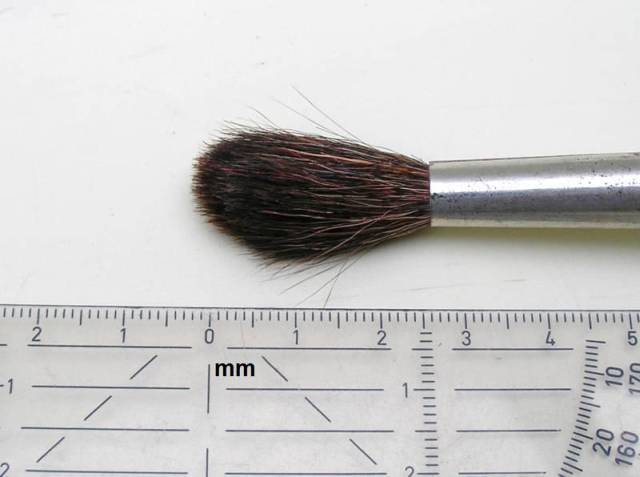Solving composites problems
Solutions to prevent sticking molds
Use PVA at new molds
New epoxy or polyester molds do often stick whereas older molds don't. The cause is that a new mold has a reactive surface. In a cured resin, about 94-96% of the molecules are reacted; the remaining molecules remain reactive. At a new mold, these reactive molecules would like very much to stick to the molding part.
Here we need the film release agent PVA because wax release agents do not form an impervious barrier between the mold and the part.
See more: WHY MOLDS STICK: The Phenomenon Explained, Bob Lacovara.
Take care with wax release agents
Epoxy is a very good adhesive, so it sticks to a mold easily. A wax release agent does not form an impervious barrier between the mold and the part; it is very thin and fragile. Therefore, wax release agents often require several layers, but even then it can sometimes cause sticking. A foolproof release agent is PVA. How to use PVA easily, see here.
Be careful with the vulnerable PVA film
Sometimes a product still sticks in the mold when PVA is used; the PVA film may be damaged.
- The PVA film is very vulnerable to water. This means that for example, sneezing in the vicinity of the mold results in holes in the PVA film. By the way, these holes are not visible. Do not blow dust away too.
- Be careful with the hand lay-up. Too long messing around with pushing the fabric into the mold can damage the PVA film.
Make the mold flexible
The mold or part must be flexible to allow separation. If both are rigid, separation is difficult or even impossible, even when PVA is used. This is important in the manufacturing of the mold. The plug, the model, is always stiff. If the mold is made stiff too, then separation is often impossible. The plug, which takes a lot of work to build, will be destroyed easily.
How to get a smooth and dust-free release layer with PVA
PVA (polyvinyl alcohol) is a reliable release agent but it may be hard to apply it without leaving brush strokes and particles on the mold. This will be visible on the part too. Wax release agents, such as Formula Five® Release wax, do not suffer from these problems but have insufficient release properties, especially at new molds. I have experimented as long as until I had a good solution for applying PVA without leaving any texture or dust on the surface.
- Good PVA must flow well. The surface should be very smooth when the PVA has dried. If PVA dries too fast and leaves brush strokes on the mold, it is dehydrated, replace it.
Some types of PVA require a special priming wax to avoid fisheyes. Polish the priming wax after it has been dried on for 5 to 10 minutes. Repeat it one or two times for new molds to give a good base coating. Don't use mold release wax, such as Formula Five®, because it causes fisheyes with PVA.
- I like PARTALL® Coverall Film; the film is perfect without using any priming wax.
- We may apply multiple coats, each coat must be dry before proceeding. I prefer applying a single thicker layer of PVA.
- Use a tack cloth to pick-up and hold dust before applying the PVA.
- Use a dust-free room, see :"Use a shower cabin as dust-free room".
- You can also avoid dust, by using a heat gun to let dry the PVA faster.
- Use a very soft water colour brush of pony / goat hair. After a while the PVA flows out to a perfect smooth surface. The brush causes unwanted air bubbles, these disappear after a while. Also, there is a good control over the PVA film thickness using a brush. The brush can be used forever, by cleaning it with water.
- For better processing, PVA is available in a colored version. I have tried, but the color doesn't bring anything, it is invisible during processing.
How to avoid laminate overbleeding
What is overbleeding
Vacuum bagging can lead to overbleeding where the surface finish is pitted and dry. But even worse is that the laminate contains too little resin, making it less strong. The reason is that by the force of the vacuum, too much resin is sucked out of the laminate. Here, I want to see what can be done to avoid overbleeding.

Lamination process A
As common, these layers are used with the vacuum bagging process:
- Bleeder
- - - - - - - - Perforated release film
- Peel ply optional
- Fabric with resin
Lamination process B
Solution to avoid overbleeding: using an impervious release film, without holes. Excess resin is not removed. The vacuum is just used for pressure.
- Breather
- ———— Impervious release film
- Peel ply optional
- Fabric with resin
Lamination process C
Using an additional impervious film and a breather layer. The vacuum presses the excess resin from the laminate into the bleeder, but will not suck out resin from the laminate. Ideally, the bleeder cloth and the perforated release film can be dimensioned accordingly to bleed off the right amount of resin.
- Breather
- ———— Impervious release film
- Bleeder
- - - - - - - - Perforated release film
- Peel ply optional
- Fabric with resin


